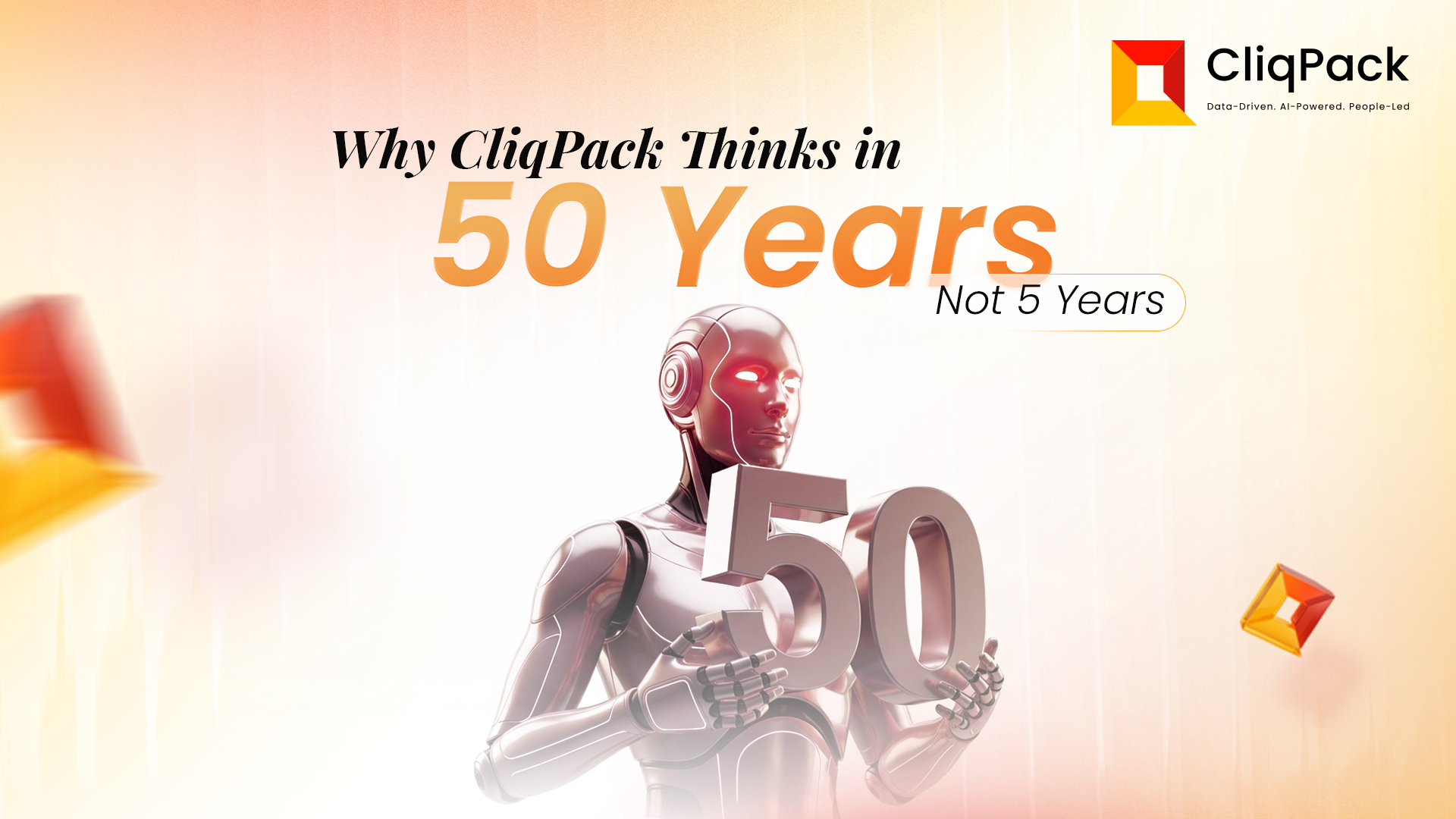While the industry chases quarterly wins, we’re building the digital infrastructure that will power the next half-century

The technology industry operates on a peculiar timeline. Five-year roadmaps. Three-year innovation cycles. Quarterly pivots that reshape entire product strategies. This velocity has become so normalized that we’ve stopped questioning whether it’s sustainable—or even sensible.
At CliqPack, we questioned it. And we didn’t like the answer.
The Hidden Cost of Short-Term Thinking
Walk into any enterprise today and you’ll find the evidence: legacy systems held together by integration middleware, “digital transformation” initiatives that become obsolete mid-implementation, platforms requiring constant migration and re-platforming.
The pattern is exhausting and expensive. Companies aren’t building—they’re perpetually rebuilding. They’re not transforming—they’re adapting to someone else’s vision of the future.
We realized something fundamental: the companies defining the next era of technology won’t be those reacting to change. They’ll be those creating infrastructure so fundamentally sound that change happens around it, not to it.
The Market Reality That Changed Everything
The market shift we’re witnessing isn’t about AI, blockchain, or any single technology. It’s about the collision between accelerating technological capability and the fundamental limits of organizational adaptation.
Every business leader asks the same question: “How do we keep up?”
We believe that’s the wrong question.
The right question is: “How do we build systems that don’t require keeping up?”
This isn’t philosophical. It’s practical.
When we designed CliqProperty for real estate operations, we didn’t build a property management tool. We architected a vertical digital ecosystem that could absorb future innovations—AI, IoT, predictive analytics—without requiring a ground-up rebuild.
When we created FarmGPT for agricultural communities, we didn’t build a chatbot. We built an AI-powered knowledge infrastructure that could evolve as farming practices, climate conditions, and market dynamics shift over decades.
Building New Systems, Not Patching Old Ones
Here’s what differentiates CliqPack’s approach:
Most companies adapt to existing systems. They inherit technical debt, work within established paradigms, and optimize incrementally. They’re fast because they’re following well-worn paths.
We define new systems. This is slower at the start. It requires deeper domain expertise, more fundamental engineering, and the discipline to resist shortcuts. But it means we’re not building on someone else’s crumbling foundation.
While our competitors will spend the next decade migrating clients from Version 3 to Version 4 to Version 5, our clients will be operating on infrastructure that’s been continuously evolving—intelligently, automatically, seamlessly.
What 50-Year Infrastructure Actually Looks Like
Thinking in 50 years isn’t about predicting the future. It’s about building infrastructure with three core characteristics:
1. Adaptive Intelligence Our platforms don’t just store data—they learn from it. They don’t just execute processes—they optimize them. AI isn’t a feature we bolt on; it’s woven into the architectural DNA.
2. Vertical Integration We don’t build horizontal tools that require endless customization. We build vertical ecosystems for specific industries—real estate, education, agriculture, telecom—with deep domain logic embedded from day one.
3. Evolutionary Design Our systems are designed to evolve. Not through disruptive overhauls, but through continuous, intelligent adaptation. The same platform serving a business today will serve their grandchildren, transformed but fundamentally continuous.
The Responsibility of Infrastructure
When Banglalink trusted us with their telecom operations, they weren’t buying software. They were investing in infrastructure that would handle billions in transactions, serve millions of customers, and operate reliably for decades.
When governments partner with us for digital reform initiatives, they’re not looking for the next shiny app. They’re building the foundations of digital governance that will serve future generations.
This is the weight of what we do. And it demands a different time horizon.
The Discipline to Build Slowly
There’s a paradox in our approach: by thinking in 50 years, we often move faster than companies thinking in 5.
Why? Because we’re not constantly backtracking. We’re not rebuilding foundations every three years. We’re not trapped in the migrate-upgrade-replace cycle that consumes most of the industry’s energy.
We build deliberately. We build deeply. And what we build, lasts.
Not Visionary. Essential.
We don’t position ourselves as visionaries because it sounds impressive. We think in 50 years because anything less is irresponsible.
When you’re building infrastructure that hospitals depend on, that farmers rely on, that educational institutions trust with their digital future—short-term thinking isn’t just inefficient. It’s unethical.
The companies that will define the next era won’t be those with the flashiest demos or the fastest growth metrics. They’ll be those with the discipline to build infrastructure that outlives the hype cycle.
What This Means for You
If you’re a business leader evaluating technology partners, ask yourself: Is this vendor building something that will still be relevant when my successor’s successor is in my role?
If you’re making infrastructure decisions today, recognize that you’re not just solving immediate problems. You’re making choices that will echo for decades.
The question isn’t whether to think long-term. The question is whether you can afford not to.
CliqPack isn’t building for the next funding round, the next quarter, or the next five years.
We’re building the digital infrastructure your organization will depend on in 2075.
That’s not a vision. That’s a commitment.